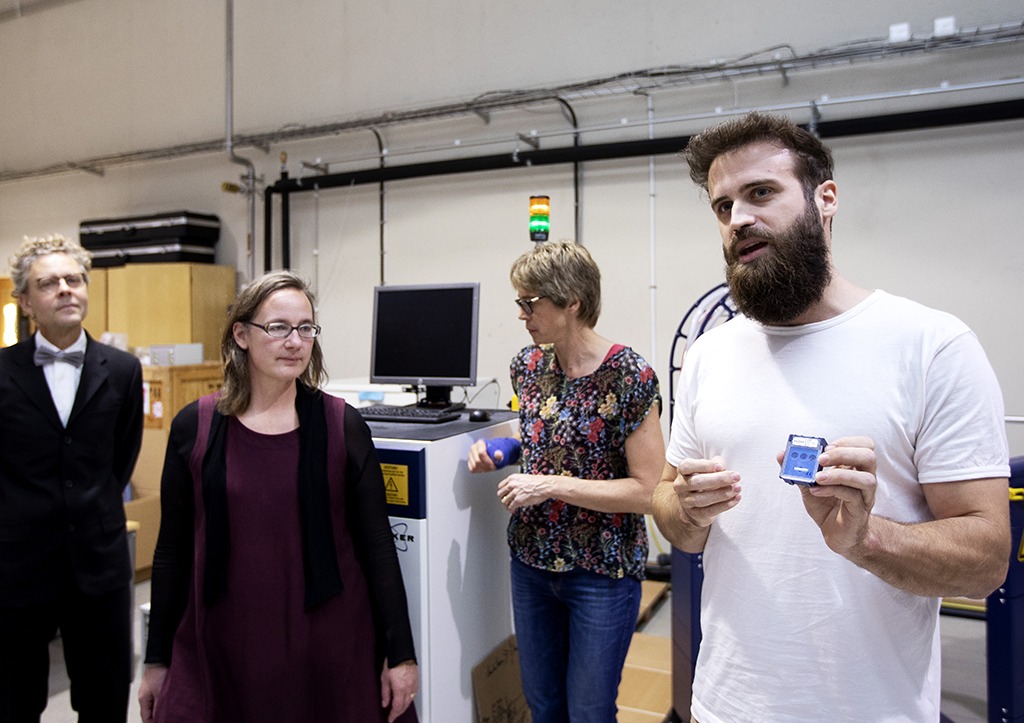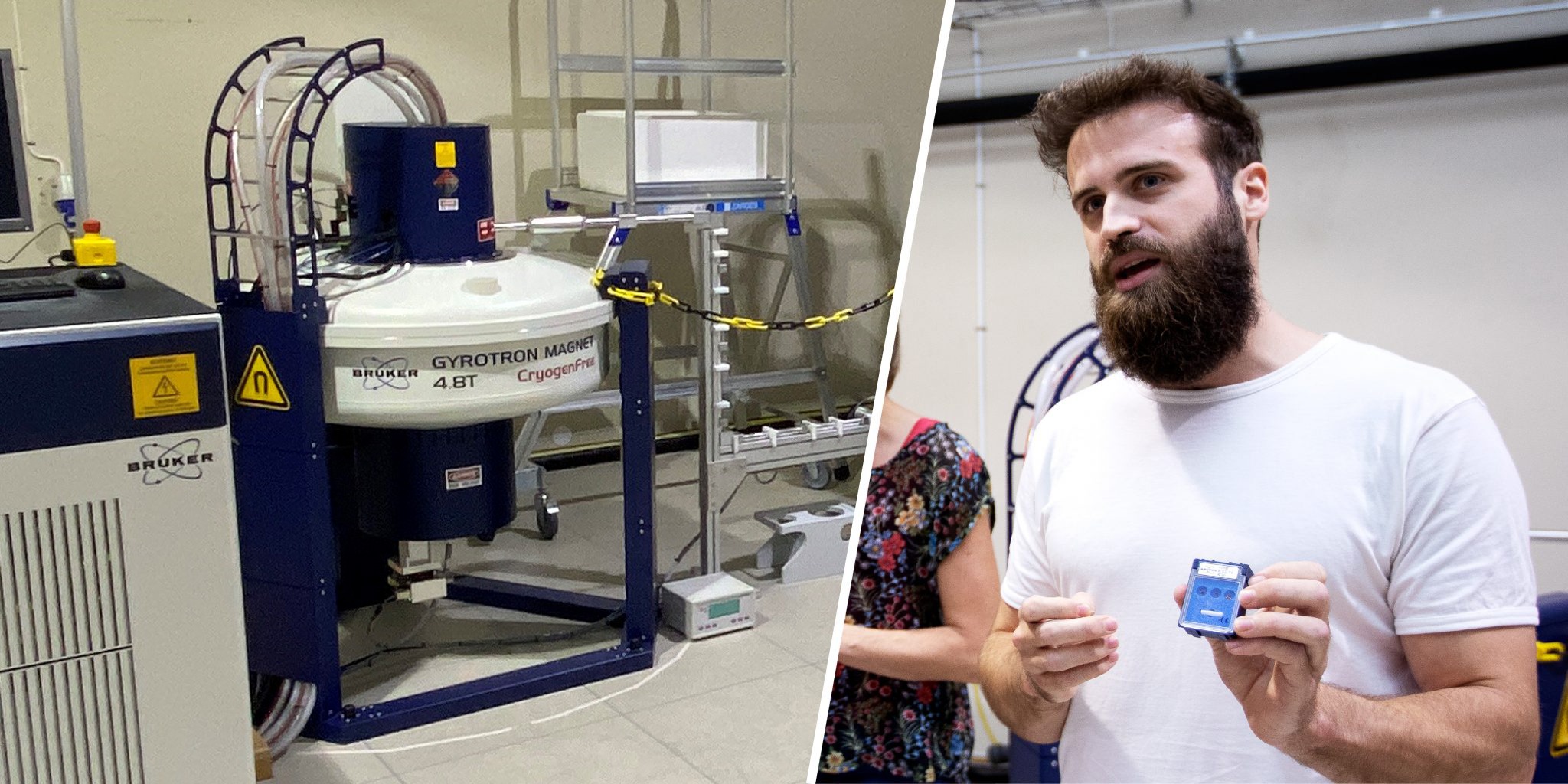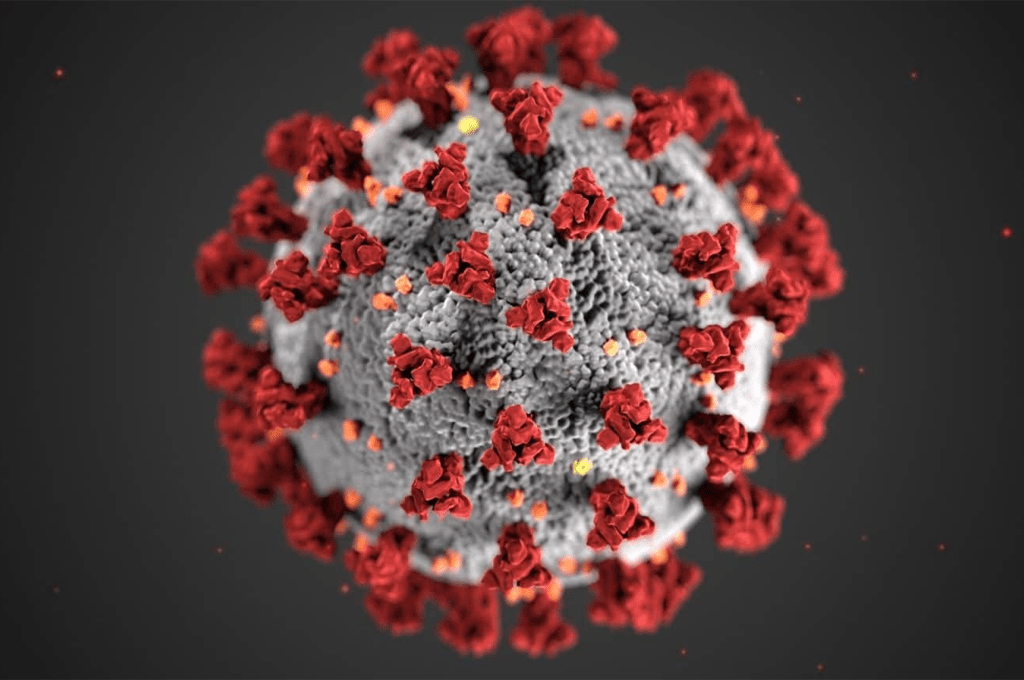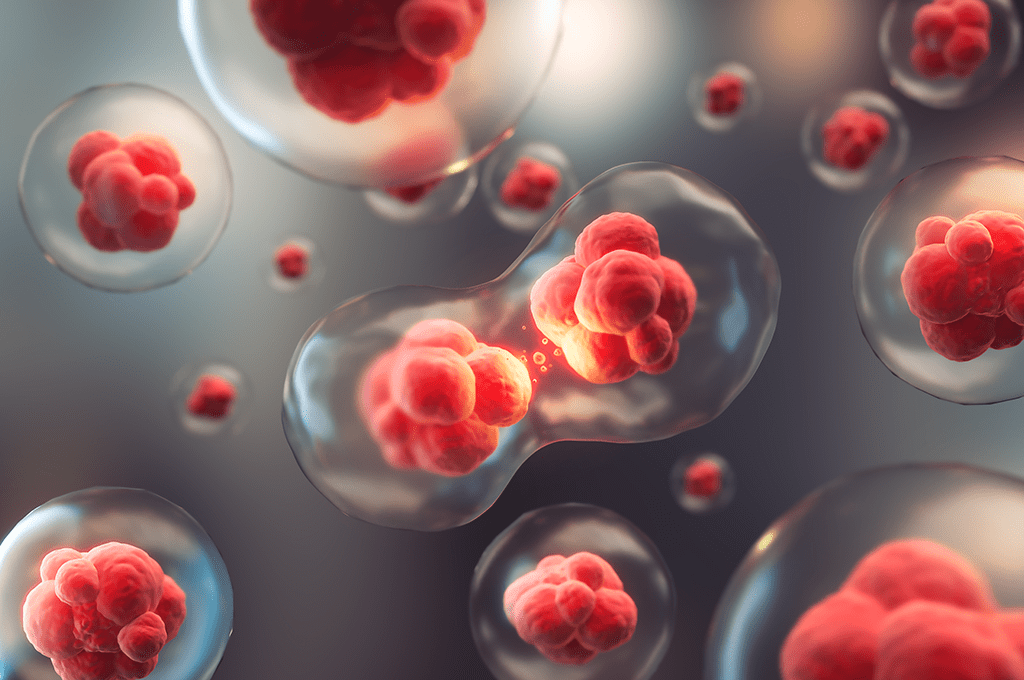New instrument at the Swedish NMR Centre shortens time of analysis from 24 hours to 10 minutes
Anyone that needs to characterise a solid sample can now make use of the new DNP-NMR spectrometer at the University of Gothenburg node of the Swedish NMR Centre, but what is it and how does it work?
Nuclear magnetic resonance spectroscopy (NMR) is a technique used for determining the molecular structure of a material. This can be done with other techniques, such as electron microscopy, but the NMR has its advantages. For one, it is non-destructive, meaning that the sample can be used again in other experiments. Less sample preparation is also required.
So how does it work? To put it simply: when placed in a powerful magnetic field, the molecular structure of a material can be analyzed by observing the interaction of nuclear spins – electrons, protons and neutrons can be imagined as spinning on their axes.
It is a beautiful piece of precise machinery that shows how state-of-the-art technology pushes science forward
Arthur Pinon
NMR has been around for quite a while, but something that is a relatively new addition to this is Dynamic Nuclear Polarization (DNP). A DNP-NMR spectrometer, as the instruments are called, uses the same technique described above, but with a lot more sensitivity. DNP amplifies the signal which gives better accuracy and shortens the time it takes to analyze. Some materials that are not possible to analyze with just NMR can therefore be studied with DNP.
Dynamic Nuclear Polarization is essentially measuring very tiny electrical currents generated by a cylinder spinning on itself several thousands of times per second, while receiving cold nitrogen gas at -173°C and is irradiated with very high power microwaves, all at the same time.
“This has the effect of increasing the intensity of the measured signals by up to a few hundred times compared to a normal solid-state NMR spectrometer. It means that a signal that took 24 hours before would take less than 10 minutes to get with DNP now. It is a beautiful piece of precise machinery that shows how state-of-the-art technology pushes science forward” says Arthur Pinon, Principal Research Engineer responsible for the DNP-NMR spectrometer at the Swedish NMR Centre node at the University of Gothenburg.
New spectrometer now part of the SciLifeLab infrastructure
The Swedish NMR Centre node at the University of Gothenburg, part of the SciLifeLab infrastructure, has through a unique collaboration with AstraZeneca recently acquired a DNP-NMR spectrometer. It has been up and running for a few months now, but had its official inauguration ceremony on October 26.

Who should use this new instrument? Basically anyone that needs to characterize a solid sample.
“This is a relatively new technique, which means researchers might not know if or how DNP could be used for their particular purpose. That’s why we need to democratize this new technique to make it more accessible” says Arthur Pinon.
DNP essential for understanding relationship between molecular and microscopic properties of the skin
Someone who is making good use of this technique is professor Daniel Topgaard at Lund University, who is “basically putting pig skin powder” into the DNP spectrometer at the Swedish NMR Centre. This work is part of a bigger research program led by Emma Sparr and Håkan Wennerström, both professors at Lund University, aiming to understand the basic physical chemistry of how the top 10 micrometers of the skin can act as a formidable barrier against chemicals from the surroundings and prevent the body water from simply evaporating, while still being easy to bend without breaking.
DNP is probably the only method that could do the job
Daniel Topgaard
Daniel Topgaard’s part of the program has been to develop NMR methods to study basic molecular-level properties: whether the skin lipids and proteins are solid or fluid depending on external conditions such as temperature, relative humidity, and the addition of foreign chemicals, for example.
In addition to bringing insight into what happens with the skin when jumping into cold water after being in a sauna, Topgaard’s work has practical consequences for the understanding of the molecular underpinnings of skin diseases and what chemicals to add to make the skin sufficiently permeable to allow drugs to penetrate into the body.
“One of the remaining basic scientific problems has been to find definite proof that skin components and additives are in direct atomic-scale contact and DNP is probably the only method that could do the job” says Daniel Topgaard.
With information about which atoms are next to each other, his group can construct a picture of the skin powder at great level of detail.
“Having this atomic-scale picture is essential for understanding the relations between molecular and macroscopic properties of the skin” says Daniel Topgaard.
Always room for improvement
While just having the grand opening for the DNP spectrometer, the Swedish NMR Centre is already working on upgrading it. They aim to get a probe, a new piece of equipment that will allow the centre to study fluorine atoms – that are commonly arising in pharmaceutical formulation, but are difficult atoms to study with DNP.
“Getting this first-in-the-world apparatus would allow us to get more pieces of information that I think are absolutely fantastic. It will be the first probe able to perform cross-polarization from hydrogen to fluorine atoms in a solid-state sample which allows the transfer of the high proton magnetization, and thus signal, to fluorine atoms” says Arthur Pinon.
Text: Niklas Norberg Wirtén





